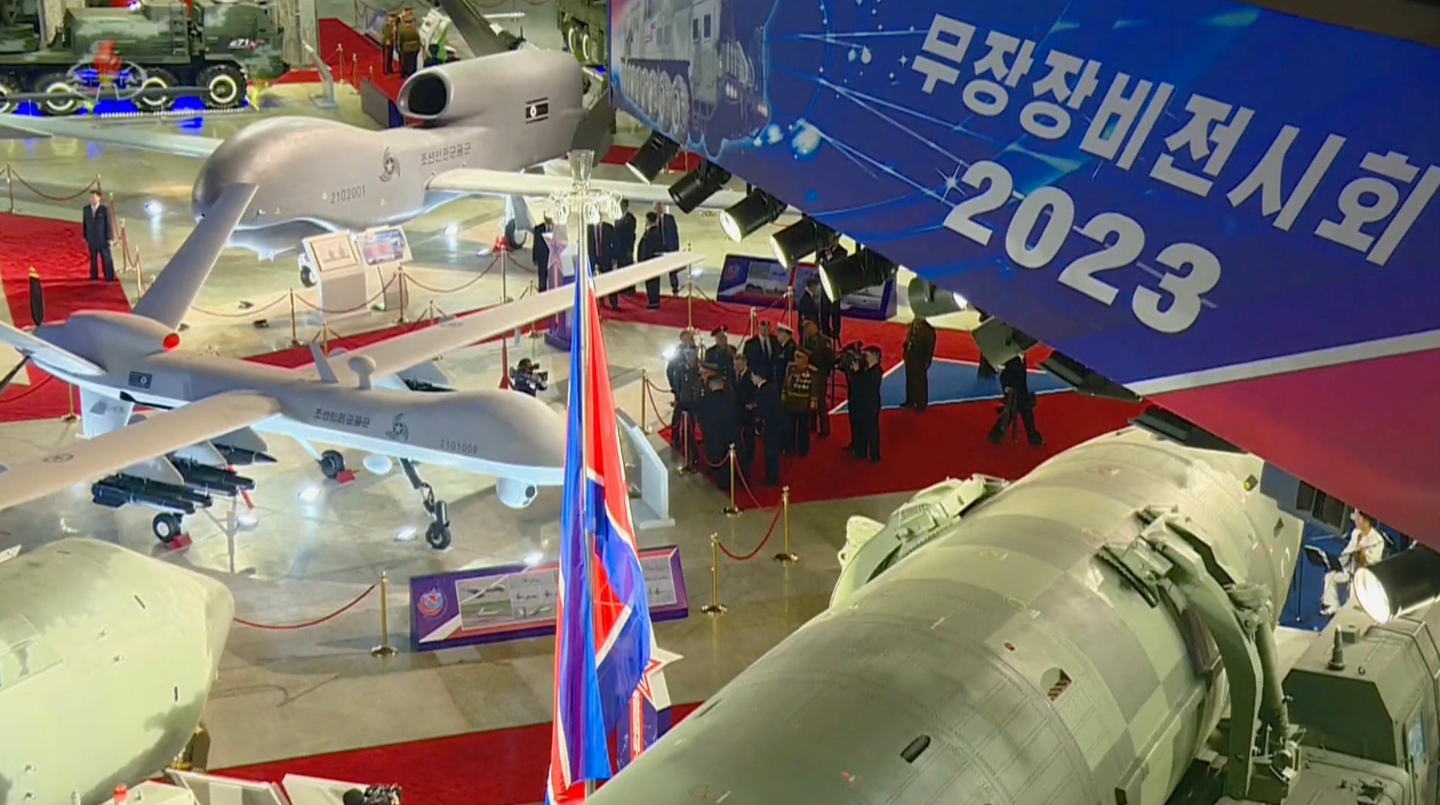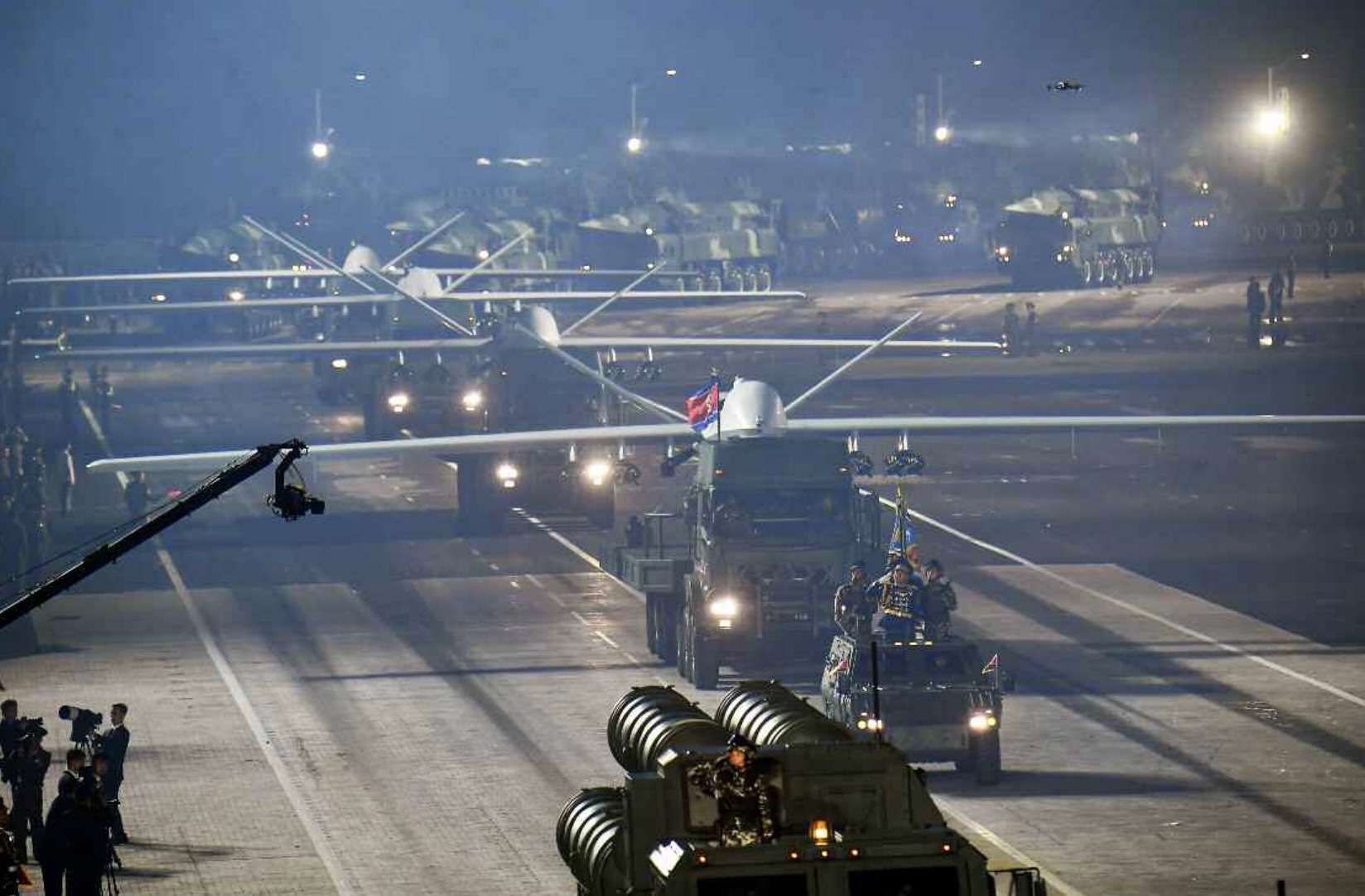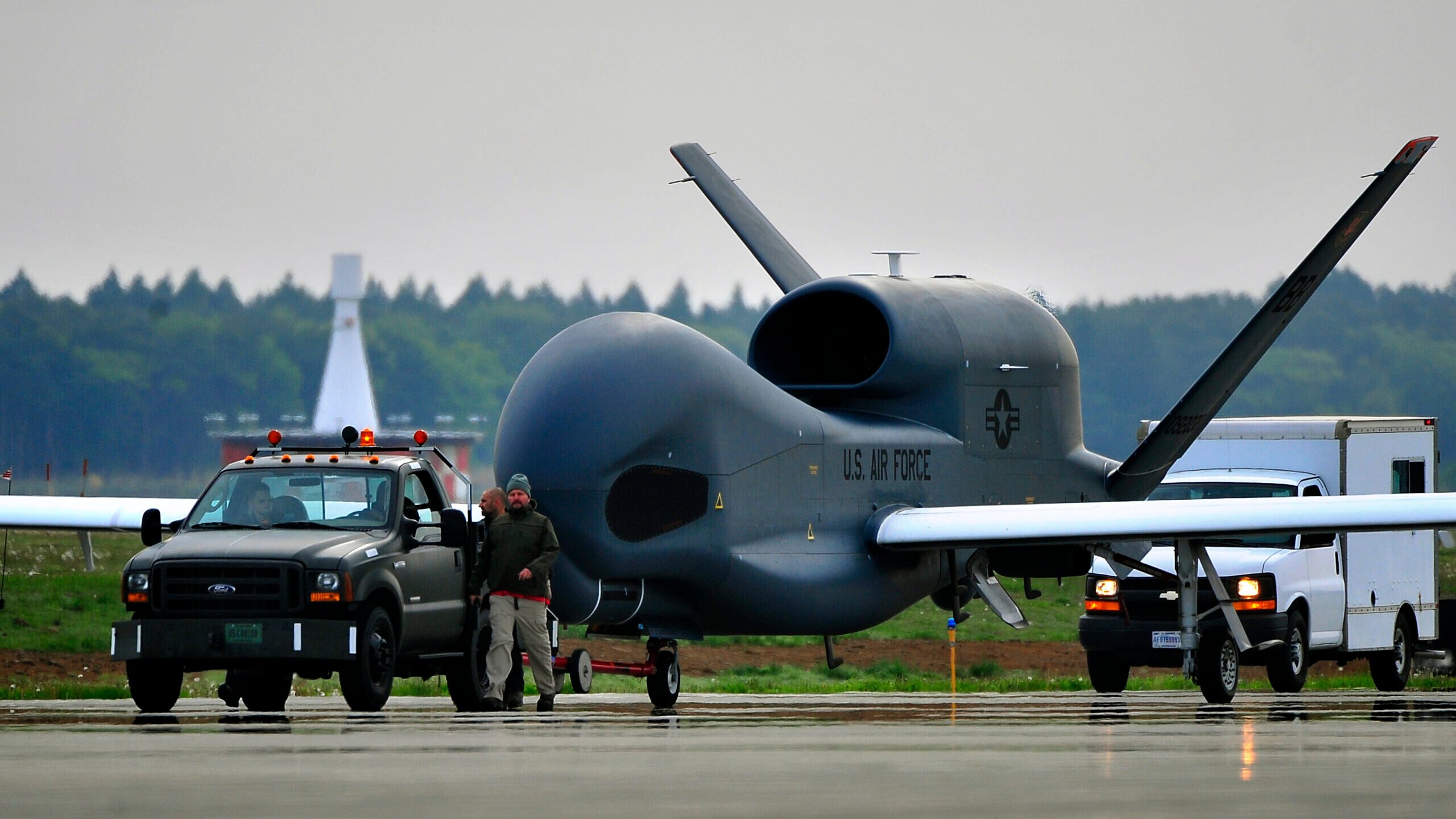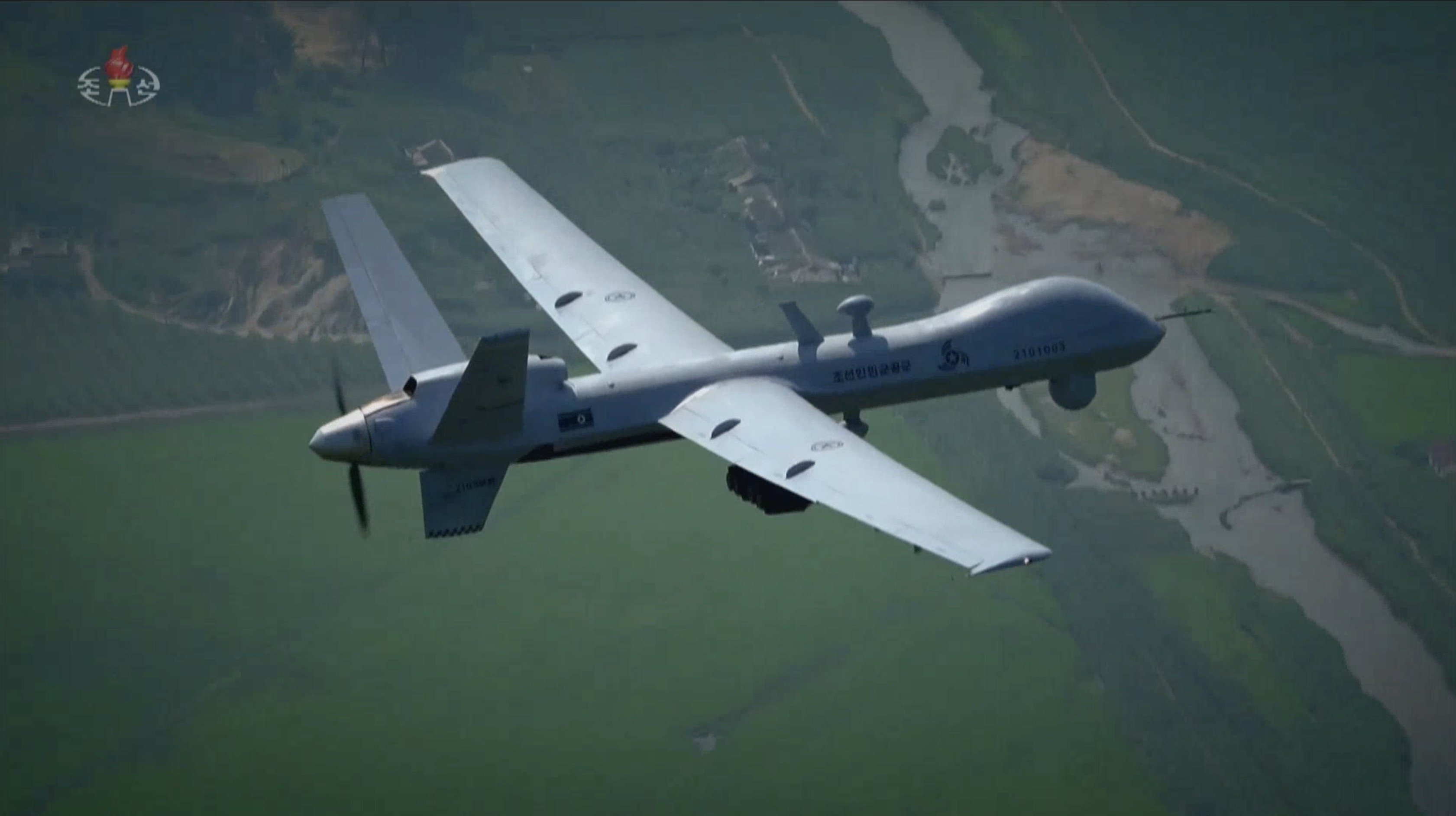North Korea recently showcased its latest technological developments in the military arena, revealing two new drone models that look strikingly similar to US-manufactured RQ-4 Global Hawk and MQ-9 Reaper drones.
The UAVs were officially unveiled at the Weapons and Equipment Exhibition 2023, held on July 26, in the presence of North Korean leader Kim Jong Un and Russian Minister of Defense Sergei Shoigu.
Framed photographs showcased in front of the drone models depict flight testing of the UAVs, including flights conducted above Pyongyang. North Korea introduced these UAVs to the global audience via its state media, also sharing captivating footage of the drones in action.
Furthermore, both drones, as part of the country’s latest military parade commemorating the 70th anniversary of the end of the Korean War, performed flyovers of Pyongyang.
The country also disclosed the official designations of the new drones, which are Morning Star-4 (샛별-4, or Saetbyol-4 in Korean) for the Global Hawk-type and Morning Star-9 (샛별-9, or Saetbyol-9) for the Reaper-type.

This revelation is particularly intriguing because the assigned designations align with the same numerical format as their US counterparts, the RQ-4 and MQ-y.
The satellite images first spotted the two unmanned aerial vehicles in June. The Global Hawk-type UAV closely mirrors the Northrop Grumman RQ-4 Global Hawk and its variants in terms of both appearance and size.
The drone’s wingspan measures approximately 115ft (35m) and features a v-tail and air intake, design elements that closely resemble those found in US drones.
While specific details about the drone’s specifications and mission remain elusive, its similarity to the RQ-4 family of UAVs suggests a high-altitude flight profile, possibly geared for extended distances.
NEW: North Korea airs the first video footage of its two new military drones in action, showing a combat UAV firing missiles during flight. Read more about the unveiling here: https://t.co/AoOvLYVg2l pic.twitter.com/07uYQGJv3g
— NK NEWS (@nknewsorg) July 27, 2023
On the other hand, the Reaper-type drone displayed alongside the Global Hawk lookalike has a smaller wingspan and was showcased with different types of missiles, including a Hellfire-like weapon.
Photos featuring this UAV were also displayed at the Exhibition, with one image showing Kim Jong Un observing the UAV on the runway, potentially taken during flight testing.
Beside this drone had a placard that seemed to hold technical information about the aircraft, but North Korean media deliberately blurred the content, leaving its specifications undisclosed.
North Korea’s New Drones
The precise capabilities of these North Korean drones remain shrouded in uncertainty. However, experts speaking to EurAsian Times suggest that it is evident that these drones may not match the advanced features of their US counterparts.
Stephen Pendergast, a former Systems Engineer at General Atomics ASI, told The EurAsian Times: “There is not much trick to replicating the Reaper UAV airframe. Many Reapers have been lost, and the design is not classified or export controlled by GA-ASI… so nefarious individuals can acquire it.”
Pendergast explained that duplicating the sensors and software of the US drones is challenging due to tight export controls.
These components are considered the “secret sauce” that gives the Reaper its performance edge. Hence, even though the North Korean drones may look the same, their performance cannot be guaranteed to match that of the original models, he added.
Similarly, Air Marshal GS Bedi (Retd), Former Director General (Inspection & Safety) Indian Air Force, told EurAsian Times that while the North Korean drones may visually resemble the US models, claiming an equivalent capability cannot be assured.

When questioned about the potential involvement of stolen technology from US companies or assistance from Iran in North Korea’s drone development, Air Marshal Bedi highlighted that apart from the US, only its allied countries operate such drones, making direct theft of US technology unlikely.
Furthermore, the Retd Air Marshal noted that Iran would prioritize its needs before assisting North Korea.
“In my opinion, they [North Korea] may have copied the shape, and firing a missile from it is no big deal. The video only shows leaving the drone. What was the target, how did it get fed, and what was the accuracy? Nothing is known. Going by the required technology to make these machines, I doubt they have the same capability even though the shape looks similar,” Bedi noted.
Meanwhile, in a discussion with EurAsian Times, Patricia Marins, a defense expert, said that North Korea’s drones, the Morning Star-4 and Morning Star-9, closely resemble the United States Global Hawk and Reaper while also bearing similarities to Chinese models like Wing Loong and certain Chaihong models such as the CH-5.

She expounded on the complexities North Korea faces in manufacturing modern drones, mainly focusing on electronic aspects.
Marins raised essential questions about the ability of these drones to achieve real-time transmission of high-definition images and videos over extensive distances, navigate communication-restricted environments using fully autonomous GPS, and operate in contested airspaces equipped with advanced air defense systems.
“For a modern drone, the EO/IR optical sensor package relies on optics, detectors, and displays. It should function during the day and night, with both night vision and thermal capabilities. Land mapping using SAR would be another challenge in terms of hardware and software,” she explained.
Given North Korea’s limited technological development capacity, the expert suggested that some components could be acquired from China and assembled in North Korea, possibly explaining the similarities between North Korean drones and their Chinese counterparts. Another possibility she mentioned was rebranding Chinese drones under a different name.
Overall, Marins noted that North Korea’s technological development capacity is limited, suggesting that while new drones may visually resemble US drones, they lack equivalent advanced capabilities and will require decades to achieve such advancements in reality.
A Threat To South Korea?
Pyongyang has been investing considerable resources and efforts into developing them signifies a notable uptick in their interest in cutting-edge UAV designs for both surveillance and potential attack purposes.
In January 2021, North Korean leader Kim Jong Un specifically urged to develop “unmanned striking equipment” and “reconnaissance drones.” Thus, developing the two new drones could be a direct response to this directive.
The engines employed in these new UAVs remain undisclosed, raising the possibility that North Korea might have acquired power plants from foreign countries. Nevertheless, despite potential limitations, these drones hold decent value for North Korea for Intelligence, Surveillance, and Reconnaissance (ISR) missions.
Samuel Bendett, a drone warfare expert, suggests, “If North Korea actually builds these heavy combat drones in sufficient numbers, the UAV ecosystem over Korean Peninsula and around the world, in general, may change.”
North Korea’s utilization of unmanned aerial vehicles (UAVs) has been primarily centered around small and basic reconnaissance drones. These modest aerial assets served as tools for gathering intelligence, albeit with limited capabilities.

But the country also possesses a more diverse arsenal of drones, including larger variants akin to target drones. In December 2022, North Korea launched multiple UAVs that intruded into South Korean airspace. These drones had simple designs, similar to hobby-type drones.
Yet, the South Korean military engaged in a five-hour operation employing combat aircraft and attack helicopters, with one of the helicopters firing 100 rounds. Despite their efforts, none of the UAVs were destroyed, and it is believed that all of them safely returned to their bases without being incapacitated.
The incident exemplified North Korea’s increasing proficiency in the drone sector. It also sheds light on the challenges the South Korean military faces in effectively tracking and intercepting such basic drones.
- Contact the author at ashishmichel(at)gmail.com
- Follow EurAsian Times on Google News




